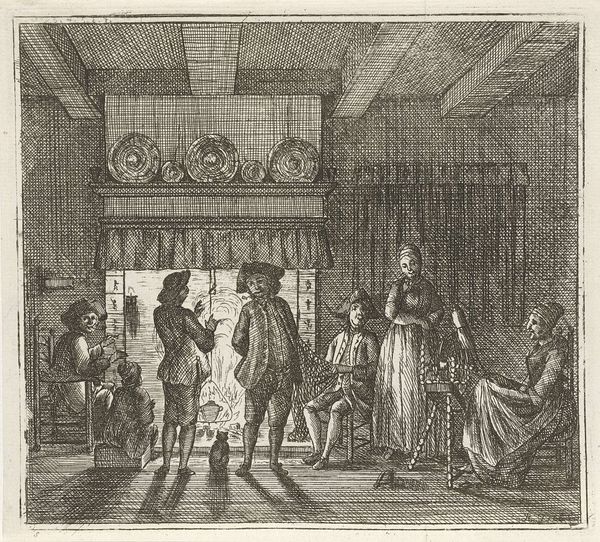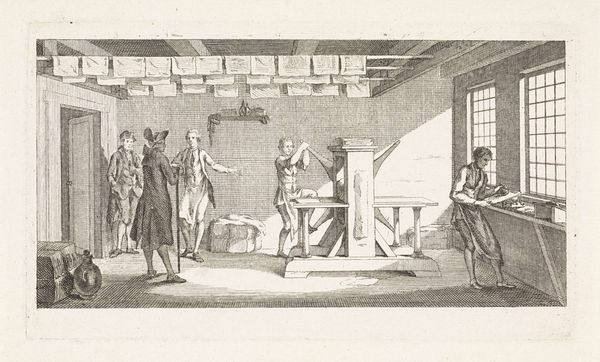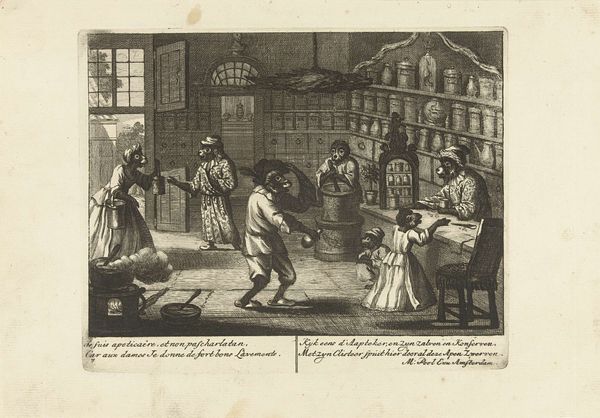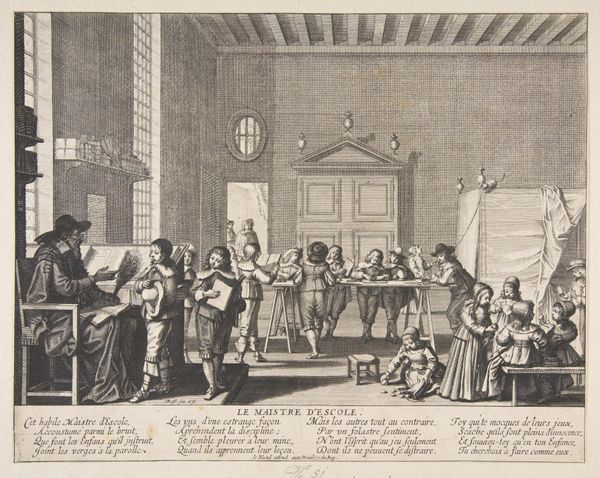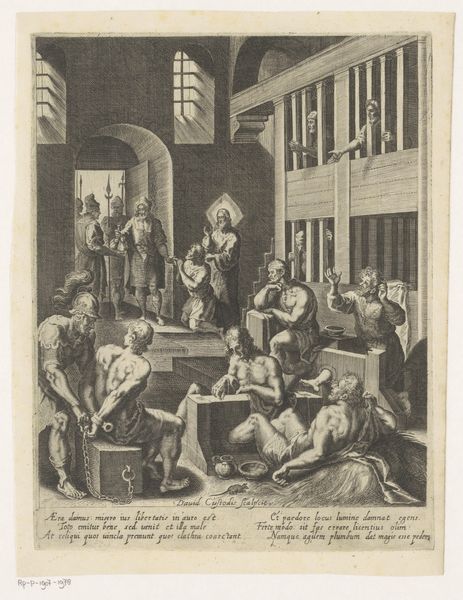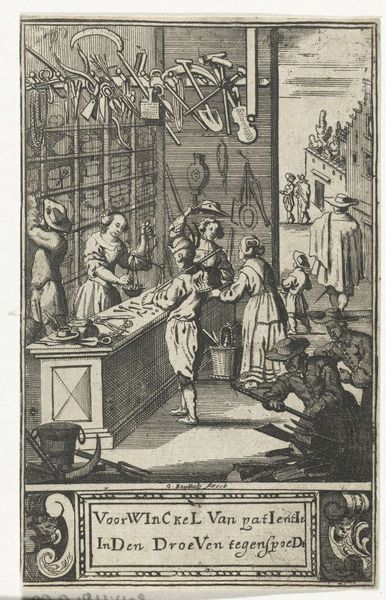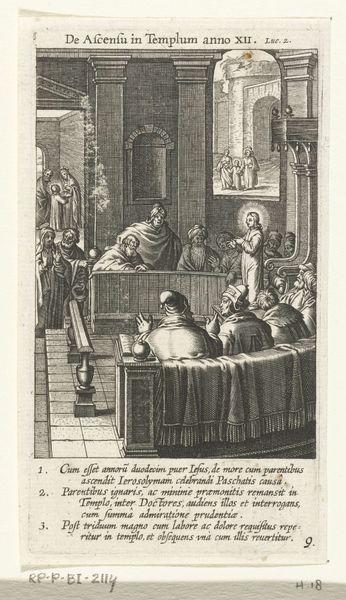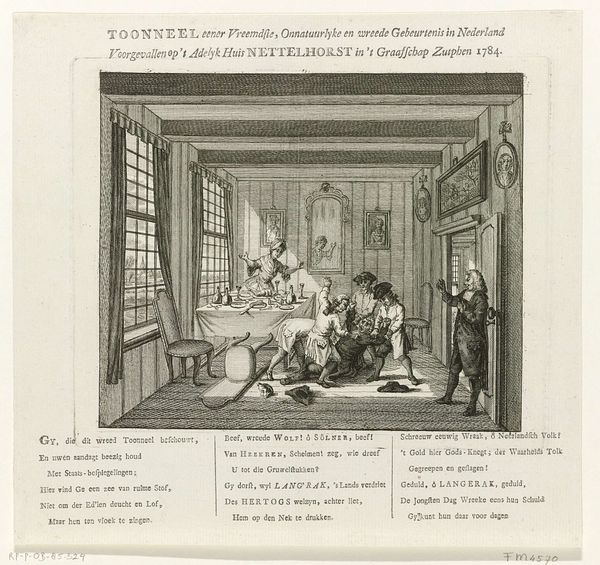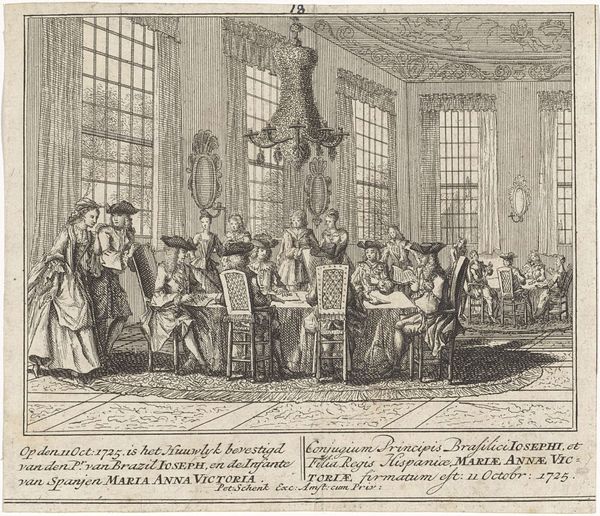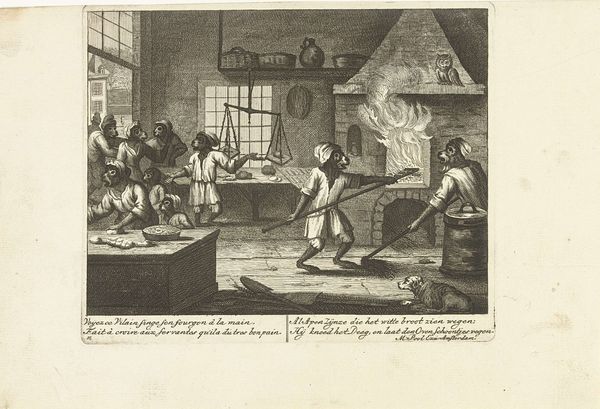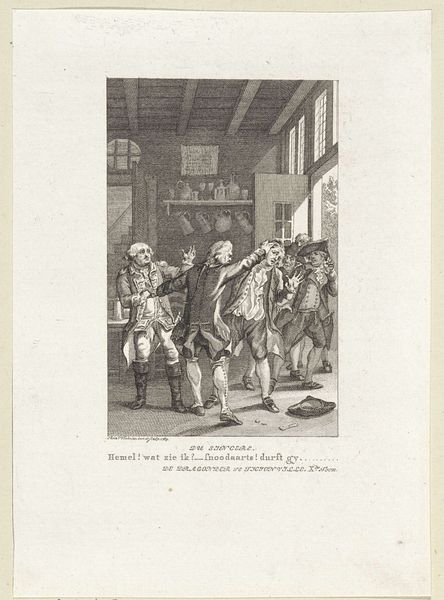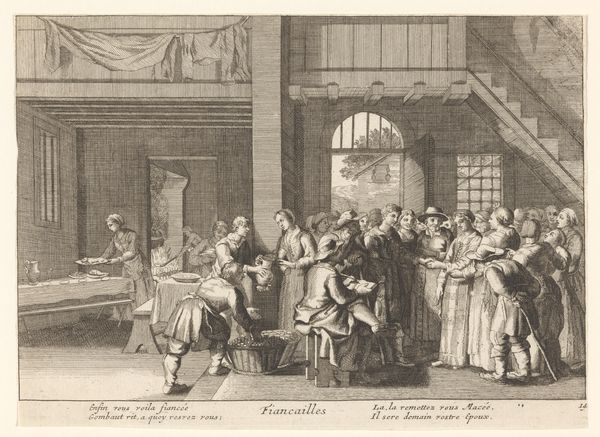
engraving
#
portrait
#
dutch-golden-age
#
genre-painting
#
history-painting
#
academic-art
#
engraving
#
realism
Dimensions: height 73 mm, width 90 mm
Copyright: Rijks Museum: Open Domain
Editor: Here we have an engraving entitled "Prinses gevangen gehouden te Goejanverwellesluis, 1787," created between 1787 and 1790 by an anonymous artist. The scene feels very staged and formal, almost theatrical. How do you interpret this work in its historical context? Curator: This engraving provides a glimpse into the turbulent political climate of the Dutch Republic in the late 18th century, specifically the arrest of Princess Wilhelmina of Prussia. But let’s not look at it in isolation, what resonates with you, knowing this scene involves a princess being detained? Does the imagery trigger any connection to more contemporary social or political issues involving powerful figures and their constraints? Editor: I see the figures almost frozen in place, stiffly posed within what looks like a very plain interior. Knowing the subject is a princess held against her will… maybe I’m seeing how even powerful women throughout history have faced limitations on their freedom. Curator: Exactly! The artist is highlighting a specific power dynamic at play. It serves as a visual testament to a moment of intense political tension. Consider this image as a form of early political commentary, meant to stir emotions and perhaps even influence public opinion regarding the Patriot movement. What could its simplified, almost austere aesthetic tell us about its intended audience and purpose? Editor: Perhaps the simplicity made it more accessible and relatable for a wider audience? Curator: Precisely. By foregoing excessive ornamentation and focusing on clarity of narrative, the artist could bypass the elite art circles. These choices reflect a strategic attempt to engage in public discourse and sway popular sentiment about the events at Goejanverwellesluis and the broader struggle for power within the Dutch Republic. Editor: So the artist uses realism not just to depict the scene, but to make a point. I learned how even seemingly straightforward historical depictions can carry potent political messaging! Curator: Exactly, seeing the Princess’s plight reminds us that those struggles resonate across time, inviting critical dialogue on power, freedom, and representation, particularly through a feminist and historical lens.
Comments
No comments
Be the first to comment and join the conversation on the ultimate creative platform.
